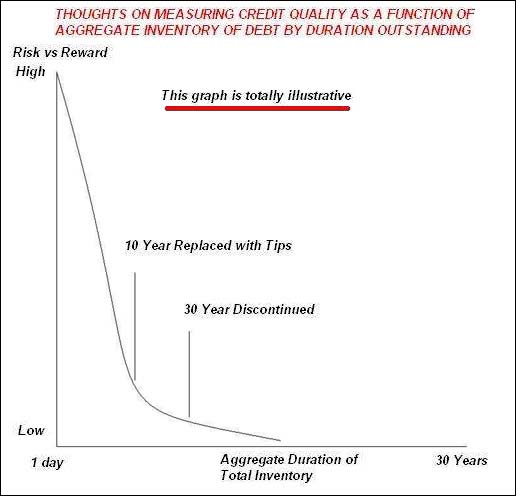Finding a fair market price
for the US ten-yr bond
Warren Pollock
The Macroeconomic Newsletter
eMail pollock.warren@verizon.net
Jun 30, 2004
To an individual investor, what yield would a 10-year fixed rate
Treasury bond need to provide in order to justify a purchase
held to maturity?
As an investor, I would evaluate if the yield were sufficient
to provide a risk-adjusted return on investment. In world of
fiat paper money, this calculation is never made.
Were the reserve currency gold, which has finite supply, return
on investment calculations would need to be considered much more
carefully.
The Treasury won't ask this question while foreign governments
and central banks are buying US paper. Vested political and economic
interests have temporarily trumped the business sense of foreign
buyers. At what point, however, does return on investment become
an issue for a portfolio of holdings measured in hundreds of
billions or trillions of dollars?
Government Service Entities (GSEs) never ask this question because
their job was to facilitate the social objective of providing
everyone with a primary home. This objective was met and replaced
with a tax-subsidized form of leveraged speculation. As things
are becoming more desperate, the GSEs are lobbying congress to
extend zero down payment credit to the living dead and the financially
destitute. The GSEs are a formidable political lobby. Additionally,
a poisonous financial condition provides ample political leverage.
Thus, these institutions are looking to the government to bail
them out even though the implied guarantee has been removed.
Retail financial institutions never ask this question because
they profit from fees, product turnover, and differentials. You
would think that customer satisfaction in providing a quality
product would be a consideration. Unfortunately the lack of customer
turnover and new business will expose yet another breach of fiduciary
responsibility.
The news out from Washington Mutual and GM on June 28th confirms
that product turnover has been slowing while profit margin on
interest rate differentials has narrowed. Now that insiders have
sold their stock, the layoffs can begin.
These companies are ending the practice of lending long at fixed
rates, borrowing short, and hedging with derivatives. The system
has become unsustainable.
Relative to the broad stock market, the price-to-earnings ratios
of financial companies are relatively low. As index components
these stocks are used to artificially understate total market
P/E.
What happens when everyone realizes the market has been overvalued?
US brokerage accounts are structured in a binary fashion that
forces a choice to be made between domestic stocks and bonds.
Individuals invested in treasuries don't question the yield they
are getting because they mistakenly believe that treasuries held
to maturity are risk free. After stocks go bad they move to bonds.
After they lose money in bonds, they switch to stocks. The small
investor loses in both directions. This leads me to believe that
in the initial stages of dislocation savers are going to pay
as debtors walk away.
Systemic instability exists when a desirable yield cannot be
found to compensate for long duration risk. To temporarily forestall
a credit crisis the aggregate duration of treasury and private
debt will be moved to shorter and shorter duration. The mismatch
between risk and yield causes a convex trend to develop (see
graph). The trend towards ever-shorter maturity provides an indicator
of creeping insolvency.

If the ratio between credit
quality and risk were appropriate, all government debt issued
could be long-dated.
June 29, 2004
Warren Pollock
The Macroeconomic Newsletter
eMail pollock.warren@verizon.net
This generalized
publication seeks to discuss macroeconomics, technical analysis,
investing theory, politics, news and markets. This newsletter
does not provide specific advice to any individual. It's our
recommendation and opinion that individuals should seek the counsel
of a licensed financial adviser who can design a plan appropriate
to specific financial conditions, objectives, and risk tolerance.
The publishers of this letter may purchase, hold, and dispose
of positions in financial instruments discussed herein at will.
The newsletter is published to its subscribers on a regular basis.
________________
321gold Inc

|